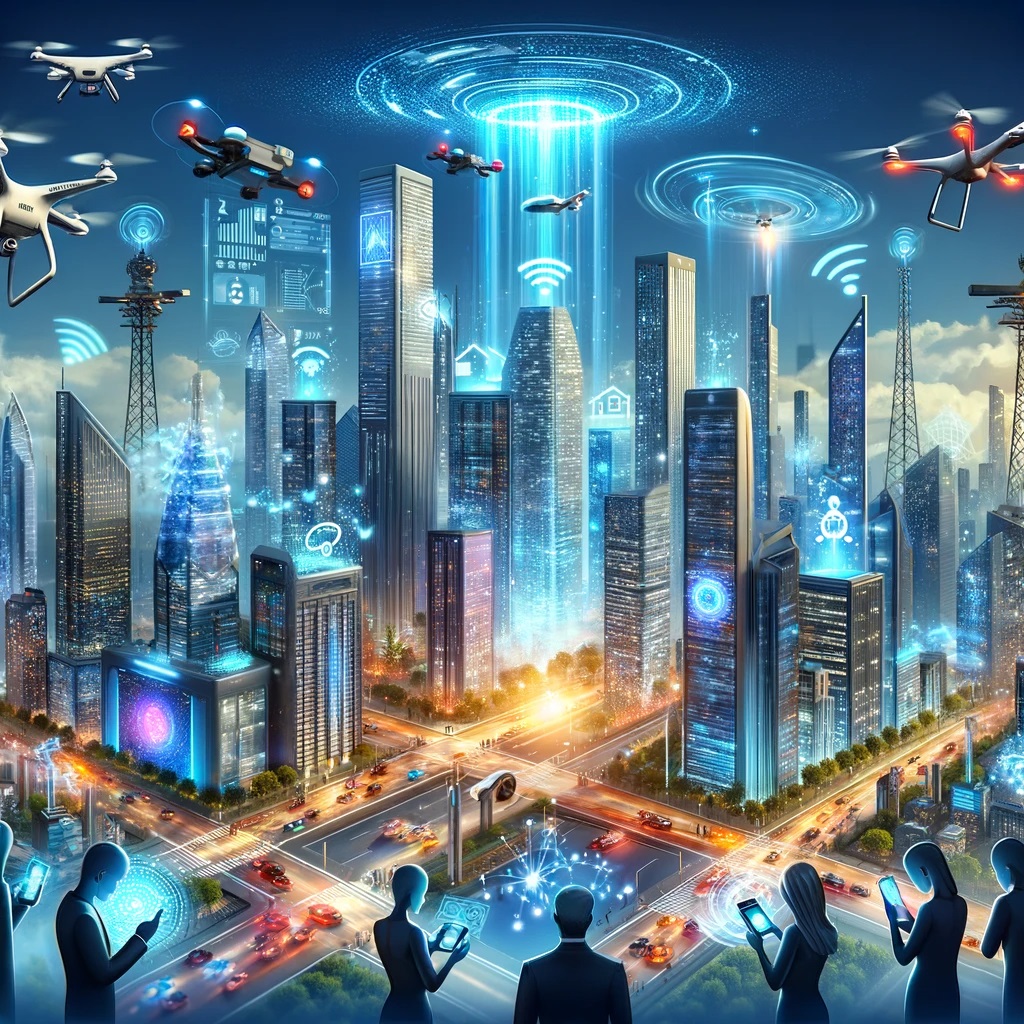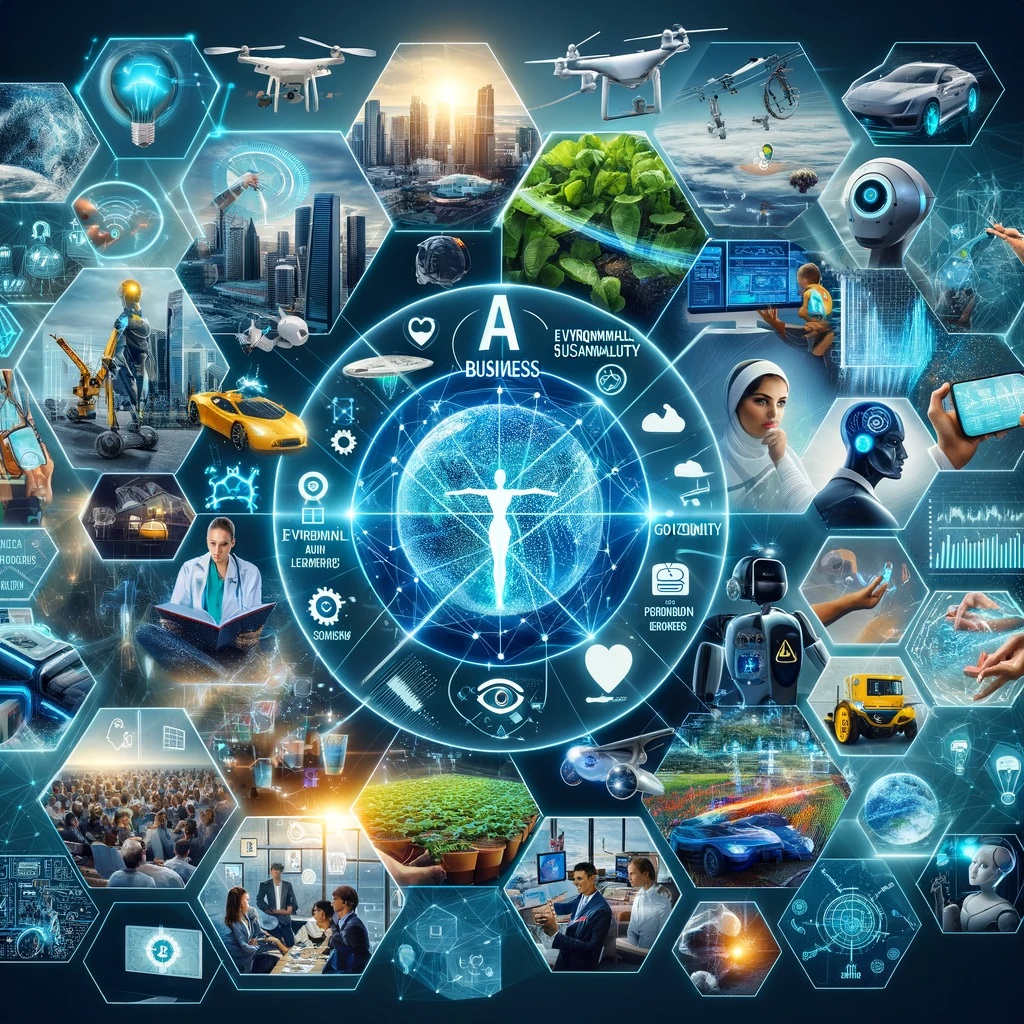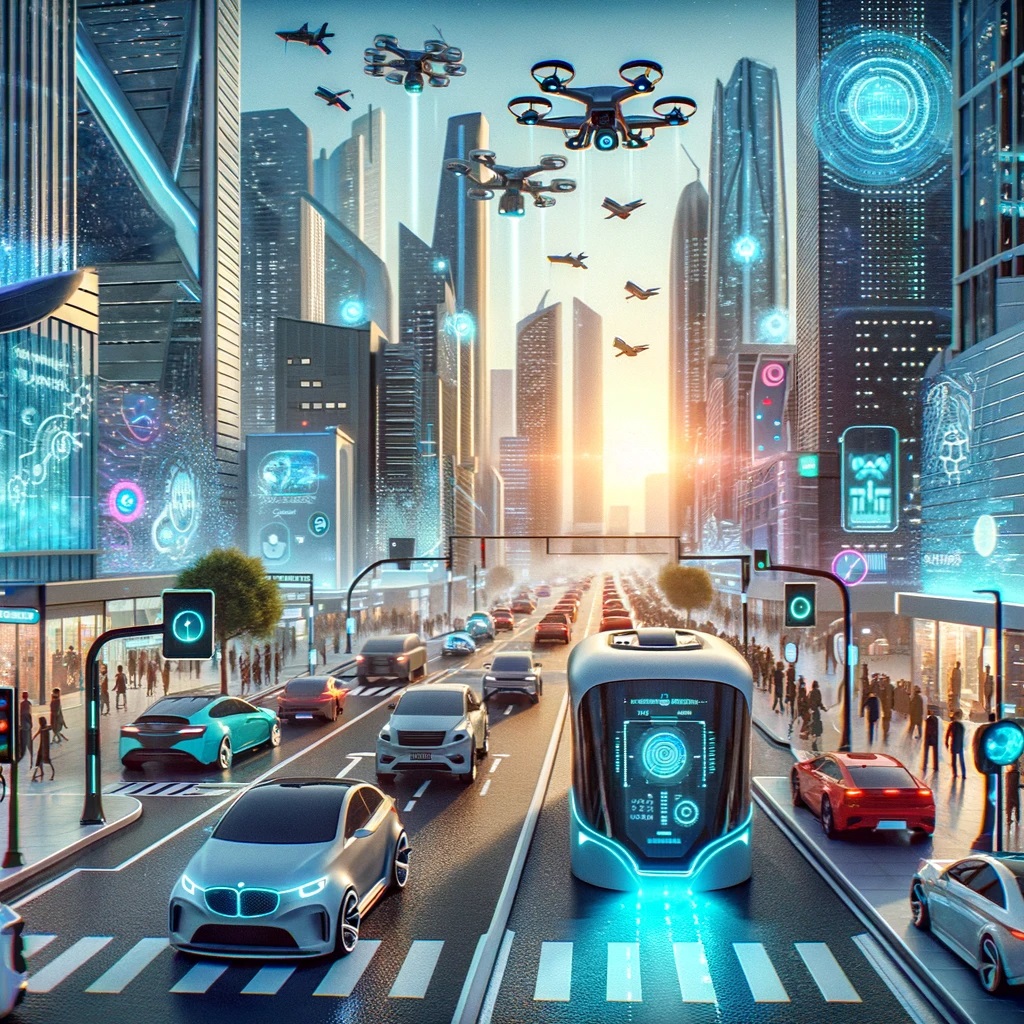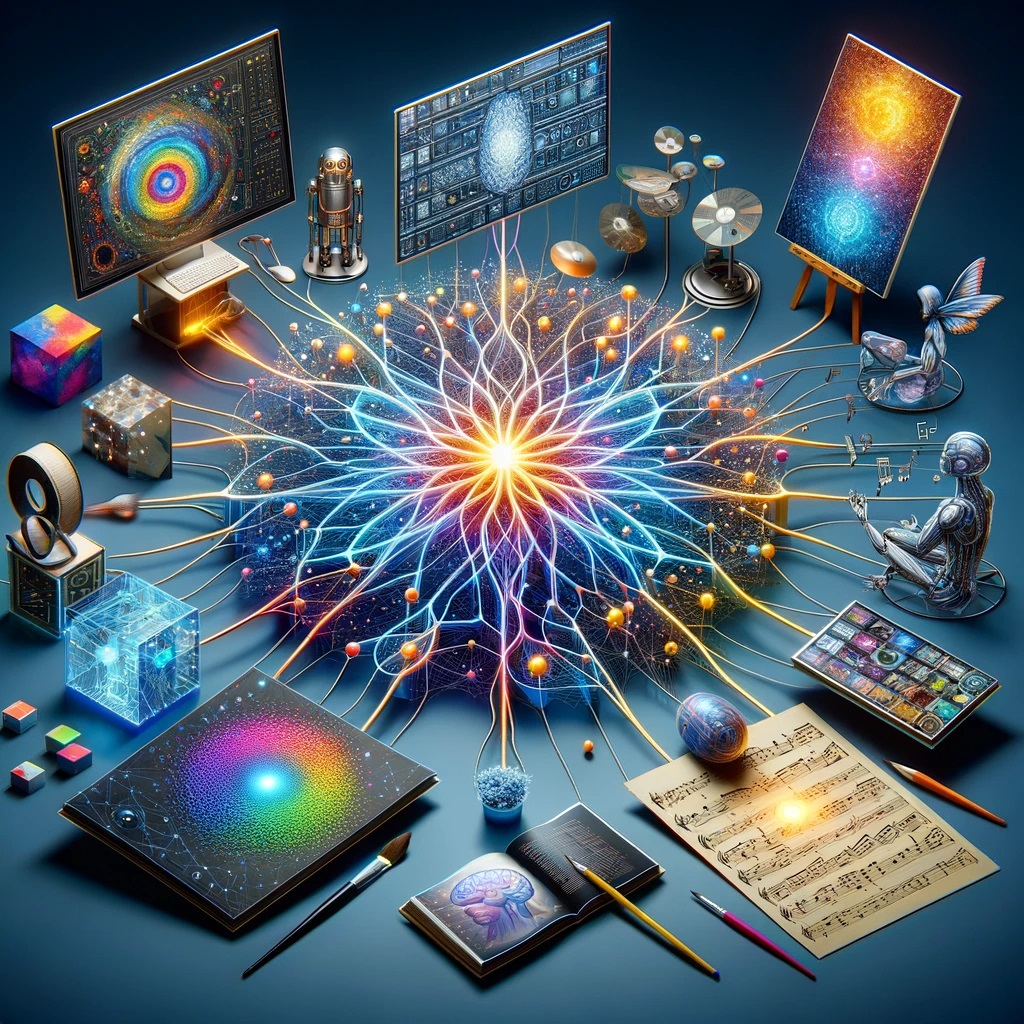In the rapidly evolving technological landscape, two groundbreaking advancements, Artificial Intelligence (AI) and 5th Generation (5G) wireless networks, are converging to revolutionize how we interact with the world. From the impact on smart cities and the Internet of Things (IoT) to addressing the challenges and potential of this collaboration, we offer insights into the future prospects of AI and 5G integration and their transformative implications for society.
What is the Synergy Between AI and 5G?
Artificial Intelligence (AI) and 5G are two of the most significant technological advancements of our time. AI, with its ability to process and analyze vast amounts of data, has been revolutionizing various industries and aspects of daily life. On the other hand, 5G technology promises ultra-fast internet speeds, low latency, and increased connectivity. When these two technologies converge, they create a synergy that has the potential to further amplify their individual capabilities.
The interplay between AI and 5G is rooted in their complementary strengths. AI can optimize network operations, improve data processing, and enhance user experiences. In contrast, 5G’s speed and connectivity offer the necessary infrastructure for AI algorithms to operate efficiently and in real-time. This synergy is particularly crucial for tasks that require immediate data processing and decision-making, such as in autonomous vehicles or real-time medical diagnostics.
AI can assist in managing and optimizing 5G networks. Through predictive analytics, AI can forecast network traffic, identify potential issues, and suggest optimal resource allocation strategies. This results in more reliable and efficient network performance, which is essential for applications that demand consistent high-speed connectivity.
How Does 5G Enhance AI Capabilities?
5G’s role in enhancing AI capabilities cannot be overstated. Its high-speed connectivity and low latency are fundamental for real-time data processing, a critical aspect of AI applications. 5G ensures that these vehicles can communicate with each other and with traffic systems without delay, thereby enhancing safety and efficiency.
5G enables AI-driven telemedicine and remote surgeries. Surgeons can perform operations from a distance with minimal latency, thanks to the reliable and fast data transmission provided by 5G. This opens up new possibilities for medical care, particularly in remote or underserved areas.
5G facilitates the massive Internet of Things (IoT) ecosystem, where billions of devices are connected and communicate with each other. AI algorithms can analyze the data generated by these devices, leading to smarter homes, cities, and industries. The reduced latency and increased bandwidth of 5G ensure that AI can process this data more effectively, leading to faster and more accurate insights.
Real-World Applications of AI and 5G Combined
The convergence of AI and 5G is not just a theoretical concept; it’s already manifesting in various real-world applications. One prominent example is in smart cities, where AI and 5G work together to optimize traffic management, energy use, and public safety. Smart traffic lights, for instance, use AI to analyze traffic flow and adjust signals in real-time, a process made seamless by 5G’s low latency and high-speed communication.
These factories use AI-driven automation and robotics, supported by 5G’s reliable and fast network, to improve production efficiency and reduce downtime. The ability to process data on the edge, thanks to 5G, means that real-time adjustments can be made on the factory floor, leading to more responsive and adaptive manufacturing processes.
Another exciting application is in entertainment and media. With 5G’s high bandwidth, streaming high-quality video content becomes more efficient, and when combined with AI, it can personalize content recommendations, enhance user interfaces, and even create interactive and immersive experiences like augmented reality (AR) and virtual reality (VR).
What’s Next for AI and 5G Integration?
Looking into the future, the integration of AI and 5G is set to deepen, leading to more innovative applications and solutions. One of the key trends will be the further development of autonomous systems, such as self-driving cars and drones. These systems rely heavily on the instantaneous data transfer capabilities of 5G, coupled with the decision-making prowess of AI.
Another trend is the growth of edge computing, where data processing happens closer to where it is needed rather than in a distant data center. This approach is vital for time-sensitive applications and is made possible by the combination of AI’s processing power and 5G’s speed.
We are also likely to see AI and 5G playing a critical role in addressing global challenges like climate change and healthcare. For instance, AI can analyze environmental data collected from various sensors, while 5G ensures this data is transmitted quickly and reliably, leading to better-informed decisions and actions.
Challenges and Solutions in AI and 5G Collaboration
Despite the enormous potential, the integration of AI and 5G also faces challenges. One major concern is data privacy and security. As more devices get connected and more data gets collected, the risk of data breaches increases. Addressing this requires robust security protocols and encryption methods, alongside AI-powered security systems that can predict and mitigate cyber threats.
Another challenge is the digital divide. The benefits of AI and 5G might not be evenly distributed, leading to disparities in access to these technologies. Bridging this gap requires concerted efforts from governments, industry players, and communities to ensure equitable access to technology.
Infrastructure is also a challenge, especially in rural or underdeveloped areas. Deploying 5G networks and AI systems in these areas requires significant investment, which might not be immediately feasible. Public-private partnerships and innovative financing models could be key to overcoming these infrastructure hurdles.
How Will AI and 5G Impact Daily Life and Business?
The impact of AI and 5G on daily life and business is profound and multifaceted. In everyday life, these technologies are enhancing personal convenience and efficiency. For example, smart home devices powered by AI and connected through 5G networks are enabling more intuitive and responsive living environments. From voice-activated assistants to smart thermostats, the seamless integration of AI and 5G is making homes smarter and more energy-efficient.
In the business world, the combination of AI and 5G is driving innovation and competitiveness. Companies are leveraging these technologies for better data analysis, improved customer experiences, and more efficient operations. Retail businesses, for instance, are using AI to personalize shopping experiences and manage inventory, while 5G networks ensure that these systems are always connected and responsive.
Another significant impact is in the realm of remote work and collaboration. 5G’s high-speed connectivity and AI’s advanced communication tools are enabling more effective and efficient remote working environments. This shift not only enhances productivity but also opens up new possibilities for work-life balance and global collaboration.
The Role of AI and 5G in Smart Cities Development
Smart cities are perhaps one of the most ambitious and impactful applications of AI and 5G integration. In smart cities, these technologies work in tandem to improve urban living. AI algorithms analyze data from various city sensors to manage resources like water and electricity more efficiently, improve public transportation, and enhance public safety through smarter surveillance systems.
5G networks play a crucial role in smart cities by providing the necessary connectivity backbone. They enable the massive IoT ecosystem that smart cities rely on, ensuring that sensors, devices, and systems are continuously connected and transmitting data in real-time. This connectivity is essential for the real-time responsiveness required in smart city applications.







